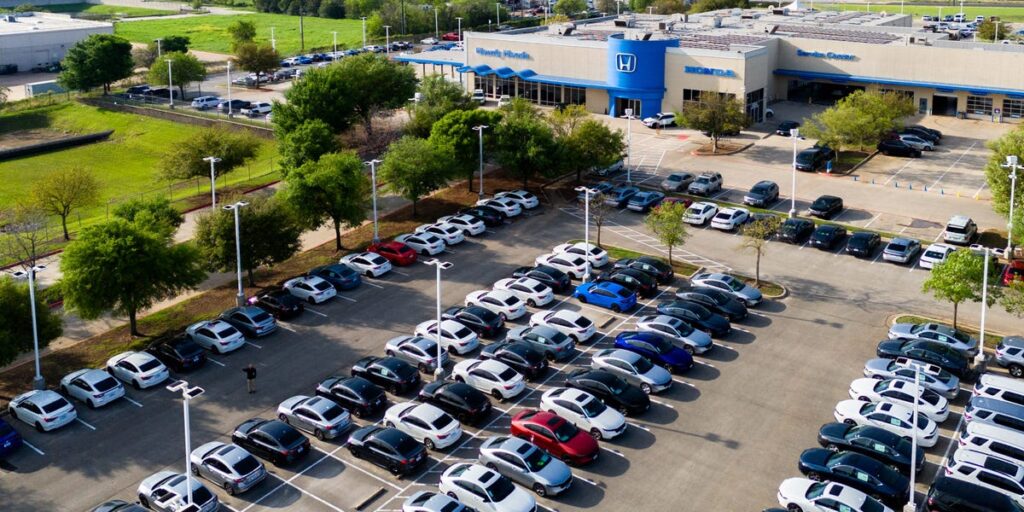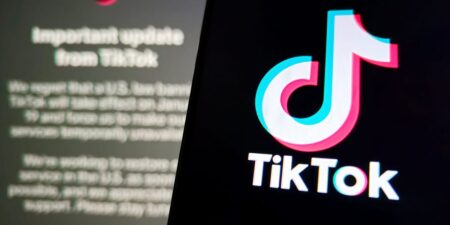- Car shoppers are more price-conscious, benefiting sedans like the Honda Civic.
- Shoppers entering the car market this year are likely to experience sticker shock.
- The big, expensive SUVs that pad automakers’ bottom lines may be in trouble.
The sedan isn’t dead yet.
Small, affordable cars — like the sedans that were all but abandoned by the American automotive industry in the last decade — are poised to have a good year in 2025.
Many would-be car buyers who spent the last few years waiting for interest rates to come down finally started shopping again last year, only to find that cars have gotten a lot bigger and more expensive than the last time they were on the lot.
“We’re going to see a lot of sticker shock,” Ivan Drury, an automotive analyst for car-shopping website Edmunds, told Business Insider.
The average price of a new car hit $49,740 in December, up 1.3% from the same month a year ago and continuing a yearslong inflationary trend as automakers look to give Americans what they want: Bigger and flashier SUVs, that just so happen to be super profitable, too.
But in a year when American consumers became more price-conscious, it has become clear the few affordable options that do exist are in higher demand.
The most popular cars in America last year, according to Edmunds data, skewed toward more affordable models like the Honda Civic, Toyota Corolla, and Tesla Model Y. The Civic jumped seven spots to crack the top 10 this year, a sign that the death of the sedan may be over-stated, according to Drury.
“Affordability is clearly top of mind for consumers,” Drury said. “These vehicles are going to exist in that more palatable price range.”
The affordability revolution
In the past year, a more general sensitivity to rising retail prices has taken shape, with this issue playing a large factor in the 2024 presidential election.
The average American consumer is growing more price-sensitive, and the sticker shock that comes with car buying right now is not good for car companies that don’t have affordable sedans to offer, Drury said.
“When we see consumers with older trade-ins, the preference for affordability gets higher,” Drury said. “Virtually anything else that’s being thrown out there, other than these sedans, is going to cause some sticker shock.”
Several major car manufacturers have spent the last decade slashing their sedan offerings in the US as engines became more fuel efficient and shoppers gravitated toward larger vehicles.
Larger cars command higher prices, improving profitability for car companies, even at lower sales volumes. This has helped drive the success of US car companies like Ford and GM in the past few years as sales come down from pandemic-era highs.
But reliance on big, expensive cars has had consequences in the past.
This strategy was a key issue for car companies during the Great Recession when shoppers suddenly shifted away from their profit-producing Hummers and pickup trucks in favor of affordable and fuel-efficient sedans.
Already in the EV market, customers are showing more interest in affordable and smaller cars, leaving Detroit’s big EVs without a clear buyer base.
Elon Musk’s Tesla has taken advantage of that by slashing prices on its smaller and more practical vehicles, the Model 3 and Model Y. Meanwhile, more affordable hybrids from companies like Honda and Toyota entice emissions-conscious shoppers on a budget.
These more frugal customers, who have stayed on the sidelines until now, are already upending the electric vehicle market with a preference for affordability and reliability. This same disruption will likely happen in the rest of the industry as shoppers finally show up to trade in aging vehicles in 2025.
“Sometimes, when you’re trading in an older vehicle, you don’t want to jump too far ahead on technology,” Drury said. “I think we will see less desire for the top-of-the-line tech.”
Read the full article here
















